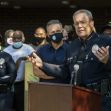In late December, New York Governor Andrew Cuomo signed into a law a moratorium on the use of facial recognition in New York’s public k-12 schools. The two years mandated by the bill will allow the New York legislature to undertake an official study into the technology to explore all privacy and accuracy concerns before the moratorium ends in July 2022. This will make New York the first state to ban the use of facial recognition in public schools.
Governor Cuomo commented on the legislation stating, “facial recognition technology could provide a host of benefits to New Yorkers, but its use brings up serious and legitimate privacy concerns that we have to examine, especially in schools.”
The New York State Education Department (NYSED) approved the use of facial recognition for the Lockport Central School District (LCSD) in November 2019. The system was fully installed in the school district by the end of January 2020. The school district agreed to the limited terms set by NYSED to not add any students into a database for potential threats within the facial recognition system.
On June 22, 2020, on behalf of two LCSD parents, the New York Civil Liberties Union (NYCLU) sued NYSD “for its harmful decision to approve a facial recognition technology system … in violation of student data protection laws. A senior staff attorney for NYCLU stated that “face surveillance systems infringe on the privacy rights of students and raise the specter of schools sharing personally identifiable information with law enforcement or federal immigration authorities like ICE.” That lawsuit is still pending.
Following the lawsuit, the New York State Legislature passed a law in July 2020 that would put a two-year mortarium on the technology, giving time for more studies to be done on its accuracy and any concerns raised on minors’ privacy.
New York Senator Brian Kavanaugh opposes the facial recognition technology in school until “a compelling case, either that it will meaningfully improve security or that it can be used without violating the privacy and civil rights of students, staff, and visitors” can be made definitively. Assembly Member Monica P. Wallace, who introduced the bill to the New York legislature earlier this year cited the “serious concerns about misidentification, misuse and data privacy that must be considered before allowing this technology to be used in schools across the state.”
LCSD claims the security system is used to keep out individuals who are prohibited from school grounds such as sex offenders, individuals with guns, and suspended staff. New York passed legislation restricting guns in schools in July 2019. Unfortunately, no law prohibits where a registered sex offender may live in New York, unless they are under parole, limiting the argument made by the school for justifying using the technology.
The National Institute of Standards and Technology (NIST) published a study at the end of 2019 on the algorithms used in facial recognition technology developed in and out of the United States. The study evaluated 189 algorithms from 99 different developers. The study found that the “demographic differentials” found in many facial recognition algorithms make it difficult to produce an accurate positive match. The matches worsen based on a person’s age, gender, or race.
NIST's study also discovered that for the software to “identify people of varied sex, age, and racial background,” the system must have a highly sophisticated “algorithm at the heart of the system." Unfortunately, of the nearly 200 algorithms studied, it found similar outcomes in the technology's production of false-positive matches. NIST’s study states, “for one-to-one matching, the team saw higher rates of false positives for Asian and African American faces relative to images of Caucasians.” These differentials found in the study “ranged from a factor of 10 to 100 times.”
The study also found this to be true for Native Americans, American Indians, Alaskan Indians, and Pacific Islanders, with the highest rates of false positives with American Indians. When analyzing the algorithms for one-to-many matches, the study found “higher rates of false positives for African American females.”
The benefits that security facial recognition promises could be lifesaving. But any mistake could lead to life-altering consequences for the falsely identified individual. While the use of the technology can be found in airports, stadiums, and other public areas throughout the United States, public schools present legal and ethical questions around the privacy of minors and whether the technology can accurately match either one-to-one or one-to-many when the targeted individual is not Caucasian.






